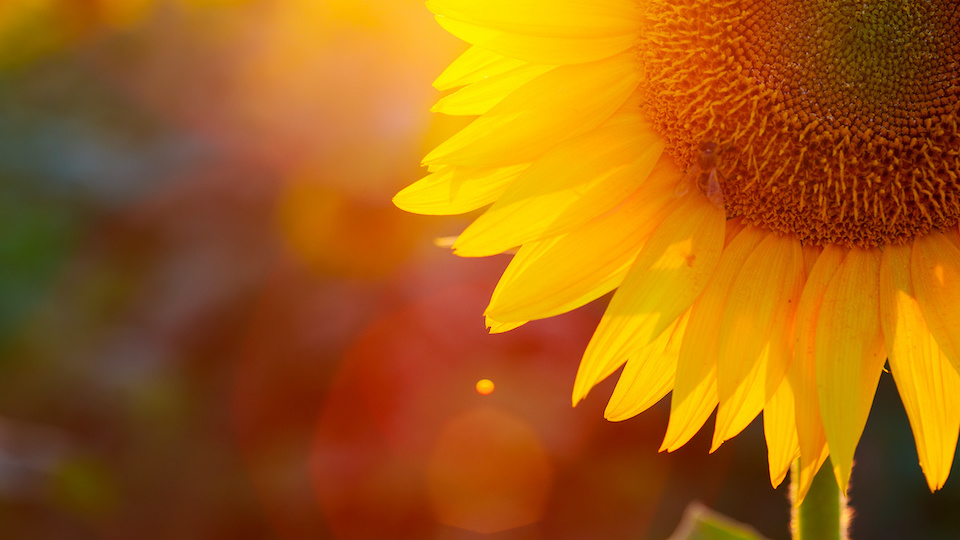For me, a garden is not a garden without sunflowers. I love how they tower over smaller garden plants, providing just the right amount of shade on a hot summer afternoon. Their big and bright flowerheads make me smile. And, talk about easy to grow! Did you know that sunflowers are also delicious and make a fantastic natural remedy for insect bites?
Sunflower (Helianthus annus) is an annual native to parts of North America. Native Americans cultivated it as a crop. Over thousands of years, they developed a large seed head. They used the seeds as a food source, eating them raw, roasted, dried, and as an oil. They also used various parts of the plant medicinally. Most people picture the tall, yellow flowers with brown centers when thinking about sunflowers, but they come in various sizes and colors. They can be as short as 16 inches and come in shades of yellow, red, brown, and can even be white and striped.
Most parts of the sunflower are edible and nutritious, including the petals, roots, and stalks. The seeds and sprouts, in particular, contain a lot of nutrients and plant compounds that are antioxidants and have anti-inflammatory properties. Native Americans used sunflowers for several medicinal purposes: to treat kidney disease and respiratory infections, to stimulate the appetite, to lower fevers, and to treat skin conditions, including snake and bug bites.
Get growing
Sunflowers grow fast, maturing in just 85 to 95 days, so there is no need to start seeds indoors. Sow seeds right in the ground after the risk of a spring frost has passed or when the soil is at least 50 degrees in a sunny and well-draining spot. Because they have deep roots, prepare the soil to a depth of two feet and sow the seeds six inches apart and one inch deep.
You can grow smaller, shorter varieties of sunflowers in containers or even indoors. For the taller types, grow directly in the ground outside. Water sunflowers deeply and infrequently to encourage deep root growth. You may need to stake the flowers and provide some type of wind protection for the tallest varieties. Use fertilizer sparingly, as too much will cause stems to weaken and break.
Harvest seeds and leaves when the time is right
Harvest leaves at any time to use for medicinal preparations. Remove the flower bud to prepare and eat as you would an artichoke. To harvest the seeds, let the flower dry on the plant. The seeds are usually ready when the back of the flower head is brown and the leaves are yellow. They should come loose with some gentle rubbing.
Dry and store leaves in airtight containers for medicinal use. To store seeds, soak them in water overnight and then spread them out on a paper towel to dry. Bake the seeds in a single layer in an oven at 325 degrees. Stir a few times as they bake and store the seeds in a container for a few weeks.
Sunflower leaf poultice for sores, bites, and inflammation
Make a poultice of sunflower leaves to treat a fever and skin ailments, like sores, inflammation, and insect bites. Cut fresh leaves into small pieces and then crush them until they form a paste. A mortar and pestle works well if you have one. If not, use a blender. Spread the paste onto the area of skin to be treated and wrap with gauze.
Besides planting sunflowers for the sheer enjoyment of it – consider these excellent uses of this popular and very “happy” plant!
Happy growing,
-Susan Patterson, CBHC and Master Gardener




